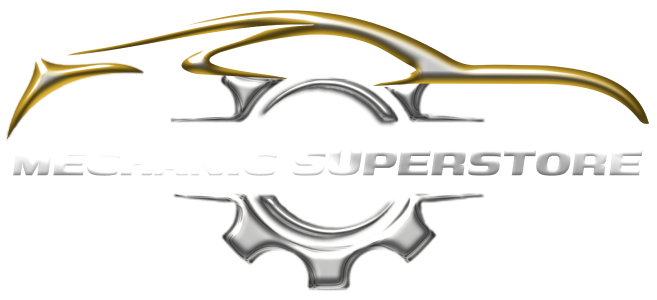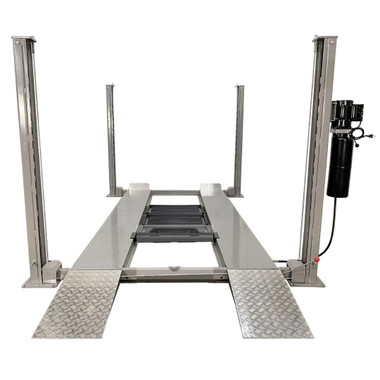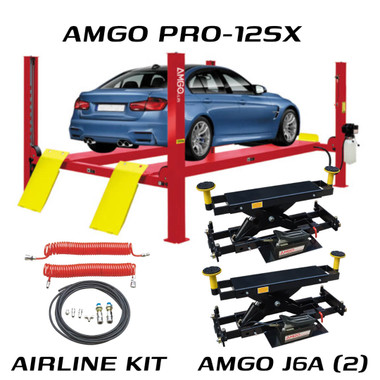Aligning Success: Understanding the Basics of Alignment Machines
Estimated 0 min read
When it comes to keeping cars running smoothly and safely, wheel alignment is one of those crucial tasks that might not always get the spotlight, but it certainly makes a big difference. For anyone running an auto repair shop, having a good alignment machine is pretty much a game-changer. It ensures vehicles are aligned just right, improving how they drive and even helping tires last longer. In this piece, we'll take a closer look at alignment machines—what they are, how they work, and why they’re such a vital part of any mechanic's toolkit. Let’s dive in and see how they help align not just wheels, but also business success in the automotive world.

What are Alignment Machines?
Alignment machines might seem complex at first glance, but they’re really all about precision. These machines play a key role in ensuring that a vehicle’s wheels are positioned correctly in relation to each other and the road. There are different types out there—some use 3D technology, while others might rely on lasers—but they all aim to tackle the same challenge: keeping vehicles running straight and true.
At a basic level, an alignment machine consists of a set of sensors that hook onto each wheel. These sensors are linked to a computer system that calculates the wheel angles, ensuring everything matches the manufacturer’s specifications. Getting these angles right—known as toe, camber, and caster—is essential for a smooth ride and even tire wear.
How Alignment Machines Work
Understanding how alignment machines work can seem a bit technical, but at its core, it’s about precision and measurement. Take, for example, the Hofmann Geoliner 609 Imaging Wheel Aligner, one of the innovative models you might find in a well-equipped workshop. This system utilizes advanced imaging technology to measure a vehicle’s wheel angles quickly and accurately.
Here's how it typically works: The machine uses sensors attached to each wheel, which then send data to a computer. This setup measures the critical angles—known as toe, camber, and caster—of each wheel. If these angles deviate from the manufacturer’s specifications, adjustments are necessary. The beauty of these machines is that they provide precise measurements that aid mechanics in realigning wheels to their optimal positions. This ensures that vehicles drive straight and that tires wear evenly over time.
For workshops, having an accurate and reliable machine like the Hofmann Geoliner is invaluable. It not only increases the efficiency of the alignment process but also enhances customer satisfaction by delivering reliable results.

Importance of Proper Wheel Alignment
Proper wheel alignment is more than just a technical necessity; it's a critical component of vehicle maintenance that brings a wealth of benefits. First and foremost, by ensuring the wheels are properly aligned, drivers can experience smoother handling and improved steering precision. This directly translates to a more enjoyable and safer driving experience.
Additionally, correct alignment significantly influences tire life and vehicle efficiency. Misaligned wheels cause uneven tire wear, leading to the need for premature replacement—a costly consequence for car owners. Moreover, vehicles with aligned wheels encounter less rolling resistance, which can enhance fuel efficiency, a benefit both for the wallet and the environment.
To put it simply, the importance of wheel alignment extends beyond mechanics—it touches on performance, safety, and cost-savings. This makes investing in a quality alignment machine, like those available in today’s market, an essential decision for any auto shop aiming to deliver exemplary service.
Choosing the Right Alignment Machine for Your Shop
Selecting the right alignment machine is a pivotal decision for any auto repair shop. It’s all about finding a balance between functionality, cost, and the specific needs of your workshop. A model like the Ranger Premium R545 XD 3D Wheel Aligner is a great option for shops seeking advanced technology combined with user-friendly operation.
When choosing an alignment machine, consider the size of your shop and the volume of vehicles you typically service. For a high-throughput shop, investing in a sophisticated model with rapid processing speed might be worthwhile. Additionally, look for features such as advanced 3D imaging or laser technology, which can offer greater accuracy and ease of use.
Budget is another key factor. While higher-end machines offer more features and precision, there are also reliable mid-range options that provide excellent performance without breaking the bank. It’s important to match the machine's capabilities with the typical needs of your clientele to maximize your investment.
Lastly, consider the after-sales support and training offered by manufacturers or distributors. Proper training ensures your team can fully leverage the machine’s capabilities, resulting in better service outcomes.
Maintaining Your Alignment Machine
To keep your alignment machine running efficiently and to ensure accurate results, regular maintenance is key. Just like any high-precision tool, alignment machines require careful handling and upkeep to remain in top condition.
Begin by following the manufacturer’s recommended maintenance schedule. This typically includes regular calibration, which is crucial for maintaining the accuracy of measurements. Miscalibrated machines can lead to incorrect alignments, which defeats the purpose of having such an advanced piece of equipment in your shop.
In addition to calibration, keep the machine and its sensors clean and free from dust and debris. This helps prevent any disruptions or inaccuracies during the alignment process. Regular inspections are also important to identify any worn parts or technical issues early on, allowing for prompt repair and minimizing downtime.
Investing a little time in machine maintenance can extend its lifespan and maximize its performance, helping you deliver consistent, quality service to your customers.
The Future of Alignment Technology
The field of alignment technology is continually evolving, with new innovations promising even greater precision and efficiency. As automotive technology advances, alignment machines are beginning to incorporate more features like artificial intelligence and adaptive alignment processes that account for a vehicle’s external conditions.
One exciting trend on the horizon is the integration of cloud-based systems, allowing for real-time updates and remote diagnostics. This can significantly enhance the way mechanics perform alignments, ensuring they always operate with the most current vehicle specifications. Additionally, as electric vehicles (EVs) become more prevalent, alignment machines are being developed to accommodate these new models' unique requirements, keeping pace with the industry's shift towards sustainable technology.
Looking forward, shops that invest in advanced alignment technology will likely stay ahead of the curve, offering enhanced services that meet the evolving demands of their customers.
Conclusion
Investing in a top-quality alignment machine is not just about improving service; it’s about aligning your business with success. From understanding the fundamentals of how these machines work to maintaining them and staying updated on technological advancements, there's a lot that can contribute to the efficiency and reputation of an auto shop. As the automotive landscape continues to develop, embracing change through cutting-edge equipment will set your shop apart in the competitive marketplace.
If you’re considering an upgrade or a first-time purchase of an alignment machine, now is the perfect time to explore the options available. Visit Mechanic Superstore's Alignment Systems to find the model that fits your shop's needs and start experiencing the benefits of precision alignment tools today!











